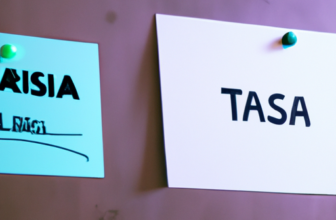Rewording: An In-Depth Look at the AI Paraphrasing and Plagiarism Checking Tool
Table of Contents
- Introduction
- How AI Paraphrasing and Plagiarism Checking Tools Help Improve Writing Quality
- Exploring the Benefits of Using AI Paraphrasing and Plagiarism Checking Tools
- The Pros and Cons of Using AI Paraphrasing and Plagiarism Checking Tools
- How to Effectively Use AI Paraphrasing and Plagiarism Checking Tools
- Understanding the Different Types of AI Paraphrasing and Plagiarism Checking Tools
- Q&A
- Conclusion
“Rewording: Get an AI-Powered Edge on Paraphrasing and Plagiarism Checking!”
Introduction
Rewording is an AI-powered paraphrasing and plagiarism checking tool that helps users to quickly and accurately rephrase text. It is designed to help writers, students, and professionals to quickly and accurately rephrase text without having to worry about plagiarism. Rewording uses advanced AI technology to analyze text and suggest the best possible rephrasing. It also provides a plagiarism checker to ensure that the rephrased text is original and free of plagiarism. This article will provide an in-depth look at the features and benefits of Rewording, as well as how it can help users to quickly and accurately rephrase text.
How AI Paraphrasing and Plagiarism Checking Tools Help Improve Writing Quality
AI paraphrasing and plagiarism checking tools are invaluable resources for improving writing quality. By using these tools, writers can ensure that their work is original and free of plagiarism. AI paraphrasing tools can help writers to rephrase their work in a more concise and accurate manner, while also avoiding the use of overly complex language. This can help to make the writing more accessible to a wider audience. Plagiarism checking tools can help writers to identify any potential issues with their work, such as the use of copied material or the incorrect attribution of sources. This can help to ensure that the work is of a high quality and that it is properly cited. In addition, these tools can help to improve the overall readability of the writing, making it easier for readers to understand the content. Ultimately, AI paraphrasing and plagiarism checking tools can help to ensure that writers produce work of the highest quality.
Exploring the Benefits of Using AI Paraphrasing and Plagiarism Checking Tools
The use of artificial intelligence (AI) paraphrasing and plagiarism checking tools has become increasingly popular in recent years. These tools can be used to help writers create original content, detect plagiarism, and improve the quality of their writing. In this article, we will explore the benefits of using AI paraphrasing and plagiarism checking tools.
One of the primary benefits of using AI paraphrasing and plagiarism checking tools is that they can help writers create original content. AI paraphrasing tools can be used to automatically rewrite text, making it easier for writers to avoid plagiarism. AI plagiarism checking tools can also be used to detect plagiarism in a text, allowing writers to make sure that their work is original.
Another benefit of using AI paraphrasing and plagiarism checking tools is that they can help improve the quality of a writer’s work. AI paraphrasing tools can be used to automatically rewrite text, making it easier for writers to create more concise and accurate sentences. AI plagiarism checking tools can also be used to detect errors in a text, allowing writers to make sure that their work is free of errors.
Finally, using AI paraphrasing and plagiarism checking tools can help writers save time. AI paraphrasing tools can be used to automatically rewrite text, making it easier for writers to create content quickly. AI plagiarism checking tools can also be used to detect plagiarism in a text, allowing writers to quickly identify any potential issues.
In conclusion, the use of AI paraphrasing and plagiarism checking tools can be beneficial for writers. These tools can help writers create original content, detect plagiarism, and improve the quality of their writing. Furthermore, they can help writers save time by automatically rewriting text and detecting errors. For these reasons, AI paraphrasing and plagiarism checking tools are becoming increasingly popular among writers.
The Pros and Cons of Using AI Paraphrasing and Plagiarism Checking Tools

The use of artificial intelligence (AI) paraphrasing and plagiarism checking tools has become increasingly popular in recent years. These tools can be used to quickly and accurately check for plagiarism and to paraphrase text. While these tools can be useful, there are both pros and cons to using them.
The primary benefit of using AI paraphrasing and plagiarism checking tools is that they can save time and effort. These tools can quickly scan a document for plagiarism and can generate a paraphrased version of the text in a fraction of the time it would take a human to do the same task. This can be especially useful for students and professionals who need to quickly check for plagiarism or paraphrase a document.
Another benefit of using AI paraphrasing and plagiarism checking tools is that they can help to ensure accuracy. These tools are designed to be highly accurate and can detect even subtle instances of plagiarism. This can be especially useful for students and professionals who need to ensure that their work is free of plagiarism.
However, there are also some drawbacks to using AI paraphrasing and plagiarism checking tools. One of the primary drawbacks is that these tools can be expensive. Many of these tools require a subscription fee or a one-time purchase fee, which can be costly for some users. Additionally, some of these tools may not be as accurate as a human editor, which can lead to false positives or false negatives.
Finally, some users may find that using AI paraphrasing and plagiarism checking tools can be impersonal. These tools are designed to be automated and may not be able to capture the nuances of a human editor. This can lead to a less personalized experience for some users.
In conclusion, AI paraphrasing and plagiarism checking tools can be useful for quickly and accurately checking for plagiarism and paraphrasing text. However, there are both pros and cons to using these tools, including cost, accuracy, and impersonality. Ultimately, it is up to the user to decide if the benefits of using these tools outweigh the drawbacks.
How to Effectively Use AI Paraphrasing and Plagiarism Checking Tools
AI paraphrasing and plagiarism checking tools are becoming increasingly popular among writers, students, and professionals. These tools can help to improve the quality of writing, reduce the risk of plagiarism, and save time. However, it is important to use these tools effectively in order to get the most out of them.
First, it is important to understand the purpose of the tool. AI paraphrasing tools are designed to help writers create unique content by automatically rephrasing existing text. Plagiarism checking tools are designed to detect plagiarism in a text by comparing it to other sources.
Second, it is important to use the tool correctly. AI paraphrasing tools should be used to rephrase existing text, not to create new content. Plagiarism checking tools should be used to detect plagiarism in a text, not to create original content.
Third, it is important to understand the limitations of the tool. AI paraphrasing tools are not perfect and may produce results that are not accurate or grammatically correct. Plagiarism checking tools may not be able to detect all instances of plagiarism.
Fourth, it is important to use the tool in conjunction with other writing techniques. AI paraphrasing tools should be used in combination with other writing techniques such as brainstorming, outlining, and editing. Plagiarism checking tools should be used in combination with other techniques such as citing sources and using quotation marks.
Finally, it is important to use the tool responsibly. AI paraphrasing tools should not be used to create content that is not original or to plagiarize other people’s work. Plagiarism checking tools should not be used to create content that is not original or to plagiarize other people’s work.
By understanding the purpose of the tool, using it correctly, understanding its limitations, using it in conjunction with other writing techniques, and using it responsibly, writers, students, and professionals can effectively use AI paraphrasing and plagiarism checking tools to improve the quality of their writing and reduce the risk of plagiarism.
Understanding the Different Types of AI Paraphrasing and Plagiarism Checking Tools
AI paraphrasing and plagiarism checking tools are becoming increasingly popular as a way to ensure that written content is original and free of plagiarism. These tools use artificial intelligence (AI) to analyze text and detect any potential plagiarism. There are several different types of AI paraphrasing and plagiarism checking tools available, each with its own unique features and capabilities.
The first type of AI paraphrasing and plagiarism checking tool is a text-based tool. This type of tool uses natural language processing (NLP) to analyze text and detect any potential plagiarism. It can detect plagiarism by comparing the text to other sources, such as books, articles, and websites. It can also detect any potential paraphrasing of text, which is when someone takes another person’s words and rewrites them in their own words.
The second type of AI paraphrasing and plagiarism checking tool is a visual-based tool. This type of tool uses computer vision to analyze images and detect any potential plagiarism. It can detect plagiarism by comparing the image to other sources, such as books, articles, and websites. It can also detect any potential paraphrasing of images, which is when someone takes another person’s image and rewrites it in their own words.
The third type of AI paraphrasing and plagiarism checking tool is a hybrid tool. This type of tool combines both text-based and visual-based analysis to detect any potential plagiarism. It can detect plagiarism by comparing the text and images to other sources, such as books, articles, and websites. It can also detect any potential paraphrasing of text and images, which is when someone takes another person’s words and images and rewrites them in their own words.
These three types of AI paraphrasing and plagiarism checking tools are becoming increasingly popular as a way to ensure that written content is original and free of plagiarism. They are also becoming increasingly sophisticated, with more advanced features and capabilities being added all the time. As such, it is important to understand the different types of AI paraphrasing and plagiarism checking tools available in order to make the most of them.
Q&A
1. What is Rewording?
Rewording is an AI-powered paraphrasing and plagiarism checking tool that helps users quickly and accurately rewrite text. It uses advanced natural language processing (NLP) algorithms to detect and replace words and phrases with synonyms, while preserving the original meaning of the text.
2. How does Rewording work?
Rewording uses advanced NLP algorithms to detect and replace words and phrases with synonyms, while preserving the original meaning of the text. It also checks for plagiarism by comparing the rewritten text to an extensive database of online sources.
3. What are the benefits of using Rewording?
Rewording helps users quickly and accurately rewrite text, while preserving the original meaning. It also helps users avoid plagiarism by checking for similarities between the rewritten text and online sources.
4. Is Rewording free to use?
Yes, Rewording is free to use.
5. Is Rewording available on mobile devices?
Yes, Rewording is available on both iOS and Android devices.
Conclusion
In conclusion, Rewording is an AI-powered paraphrasing and plagiarism checking tool that can help writers create unique content quickly and easily. It is an invaluable tool for anyone who needs to create content quickly and accurately. With its advanced features, it can help writers avoid plagiarism and create content that is both original and accurate. Rewording is an invaluable tool for anyone who needs to create content quickly and accurately.





